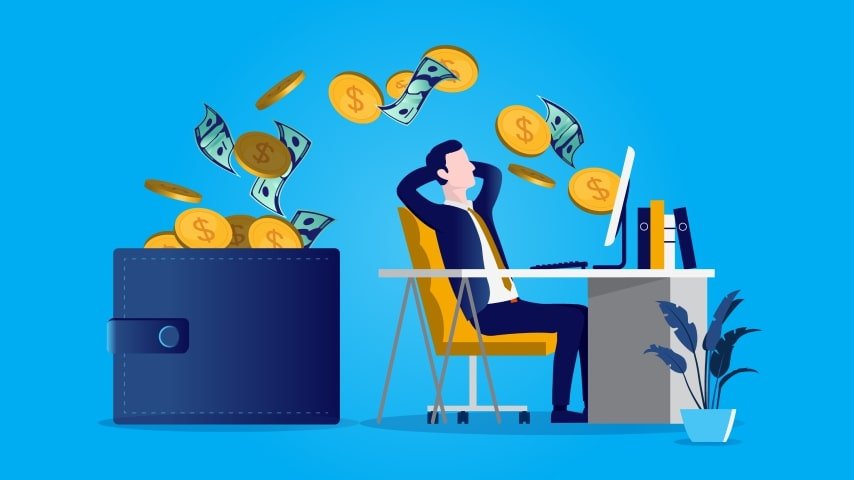Millennials grew up in a world where the “one job for life” model was already falling apart. Now, between inflation, unstable job markets, and a growing distrust of traditional retirement systems, the idea of relying solely on a paycheck feels like financial Russian roulette.
The new wealth mindset isn’t just about earning more, it’s about earning differently — building multiple, diversified income streams that aren’t tied to the 9–5 grind. And thanks to technology, regulation shifts, and the rise of new platforms, millennials today have more ways than ever to generate alternative income — from music royalties to micro-private credit.
Why Millennials Are Chasing Alternative Income
🔸 Economic Uncertainty is the New Normal
The 2008 crisis was a formative experience for many millennials, showing that even “safe” jobs can vanish overnight. Add the COVID-19 disruptions and the inflation spike of the early 2020s, and it’s clear: depending on one income stream is a risk, not a comfort.
🔸 Financial Freedom Goals
Millennials value time flexibility as much as money. Alternative income streams can provide semi-passive cash flow that buys back time for travel, creative pursuits, or entrepreneurship.
🔸 Tech-Driven Accessibility
Platforms that once only catered to institutions or wealthy investors are now open to individuals with as little as ₹5,000–₹10,000. The barrier to entry for diversified income has never been lower.
Key Alternative Income Streams in 2025
1. Royalties from Intellectual Property (IP)
🔸 What It Is
Royalties are payments you receive when someone uses your creative work — this can be music, photos, books, or even patents. They represent income that grows without selling time.
🔸 How Millennials Access It
Earlier, only established artists earned royalties. Now, platforms like Royalty Exchange and SongVest allow anyone to buy a fraction of a song’s rights. You can literally own 0.5% of a hit track and earn every time it streams. Even self-publishing on Amazon Kindle or licensing stock photography can generate small but recurring cash flows.
🔸 The Big Advantage
Royalties can be uncorrelated to markets. Whether the SENSEX is up or down, if your licensed content keeps being used, you keep earning.
2. Fractional Real Estate
🔸 What It Is
Instead of buying an entire property, you can buy a fractional ownership stake in income-generating assets like commercial real estate.
🔸 How Millennials Access It
Indian platforms like hBits, Strata, and PropertyShare allow investment tickets as low as ₹25 lakh (and in some micro-REIT models, even lower). The rent is distributed proportionally, and you share in capital appreciation when the property is sold.
🔸 The Big Advantage
Commercial rentals often yield higher than residential and have professional tenants, making cash flows steadier.
3. Micro-Private Credit
🔸 What It Is
Private credit is lending directly to individuals or businesses outside the public bond markets — essentially playing the role of a mini-bank. Micro-private credit means doing this at small ticket sizes through regulated platforms.
🔸 How Millennials Access It
Platforms like Grip Invest, Jiraaf, or Faircent offer opportunities to lend to SMEs or participate in invoice discounting. Typical returns are 8–12% annually, higher than most bank deposits.
🔸 The Big Advantage
Predictable, contractual returns that aren’t as volatile as equities. However, illiquidity and credit risk need to be managed carefully.
4. Content Monetization via Micro-Communities
🔸 What It Is
Instead of chasing millions of followers, creators are focusing on 1,000 true fans who are willing to pay for premium access, exclusive content, or niche insights.
🔸 How Millennials Access It
Subscription tools like Patreon, Substack, and Buy Me a Coffee allow niche creators to earn steady monthly income from their micro-audiences.
🔸 The Big Advantage
High loyalty, low churn — and your community becomes your personal “recurring revenue business.”
5. Tokenized Assets & Digital Collectibles
🔸 What It Is
Owning a fraction of an asset (art, collectibles, even rare whiskey) in tokenized form that can be traded or held for yield.
🔸 How Millennials Access It
Platforms like RealT (tokenized real estate) or Rario (cricket NFTs) allow partial ownership, while some tokenized art projects pay royalty-like income when pieces are resold.
🔸 The Big Advantage
It opens traditionally exclusive markets to small investors — but comes with regulatory uncertainty.
How to Build a Millennial-Friendly Alternative Income Portfolio
🔸 Start with Low Correlation
If your main job is already tied to economic cycles, choose income streams that don’t move in sync with GDP growth or stock market sentiment.
🔸 Diversify Across Risk Levels
Pair steady-return instruments like micro-private credit with high-upside plays like royalties or tokenized assets.
🔸 Automate Where Possible
Choose platforms with auto-invest or reinvestment features so income streams can grow without constant oversight.
🔸 Reinvest for Compounding
Alternative income can either support lifestyle spending or accelerate wealth growth — reinvesting in the early years can compound results dramatically.
Risks Millennials Must Watch Out For
🔸 Platform Risk — If the intermediary goes bust, your investment might be locked or lost.
🔸 Liquidity Risk — Some income streams can’t be exited quickly; plan your cash flow needs accordingly.
🔸 Regulatory Changes — New laws can affect tokenized assets, P2P lending, or fractional property ownership overnight.
🔸 Hype vs. Reality — Not every “passive income” claim is real; always check historical payouts and platform credibility.
The Bottom Line
Millennials have the advantage of time, tech-savviness, and access to platforms previous generations never dreamed of. The real challenge isn’t finding opportunities — it’s curating the right mix that’s sustainable, low-risk enough to sleep at night, but high-growth enough to actually make a difference.
The old playbook said, “Work hard now, retire later.” The new one says, “Build cash flows now, buy freedom earlier.” And with royalties, micro-private credit, fractional real estate, and digital monetization, that future feels more possible than ever.




